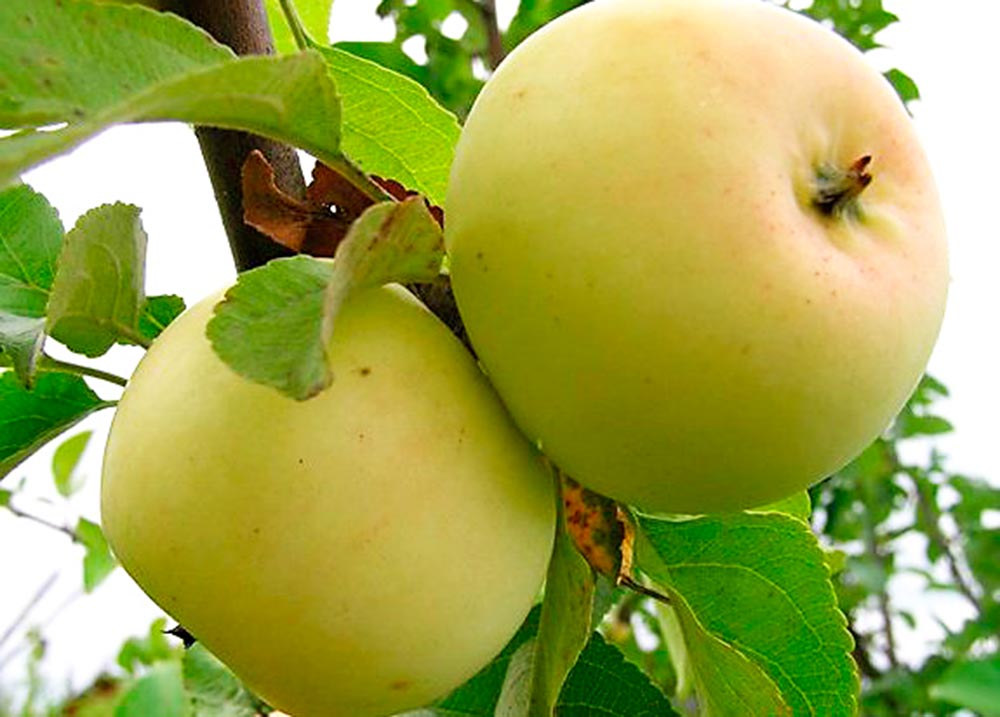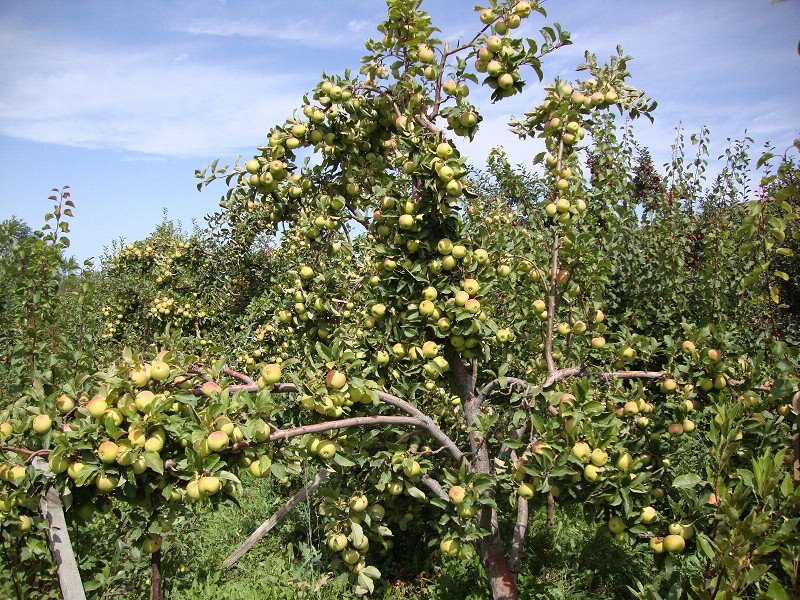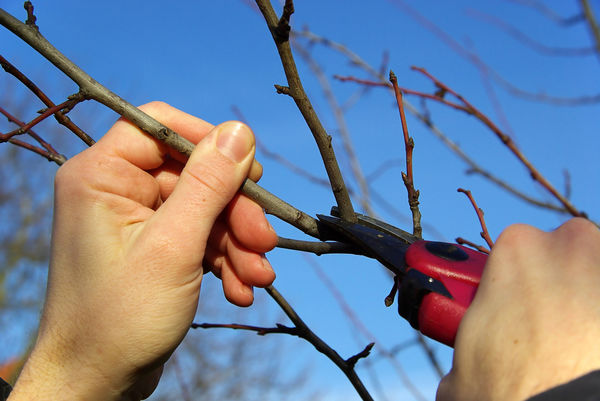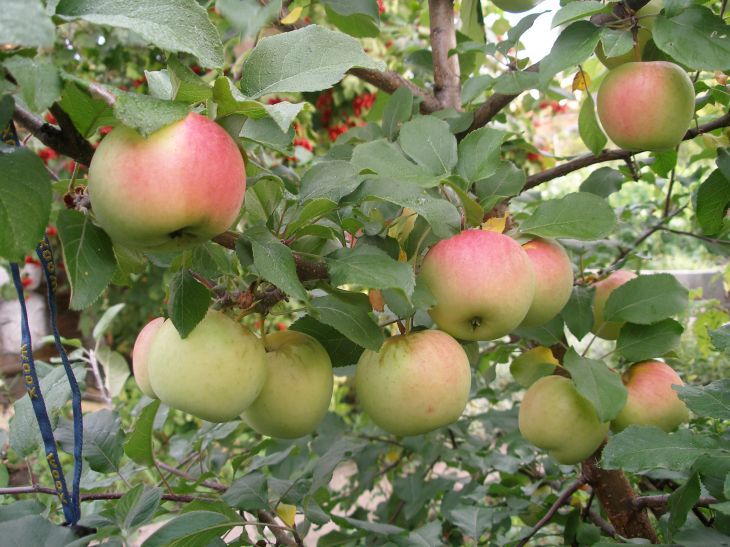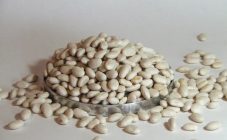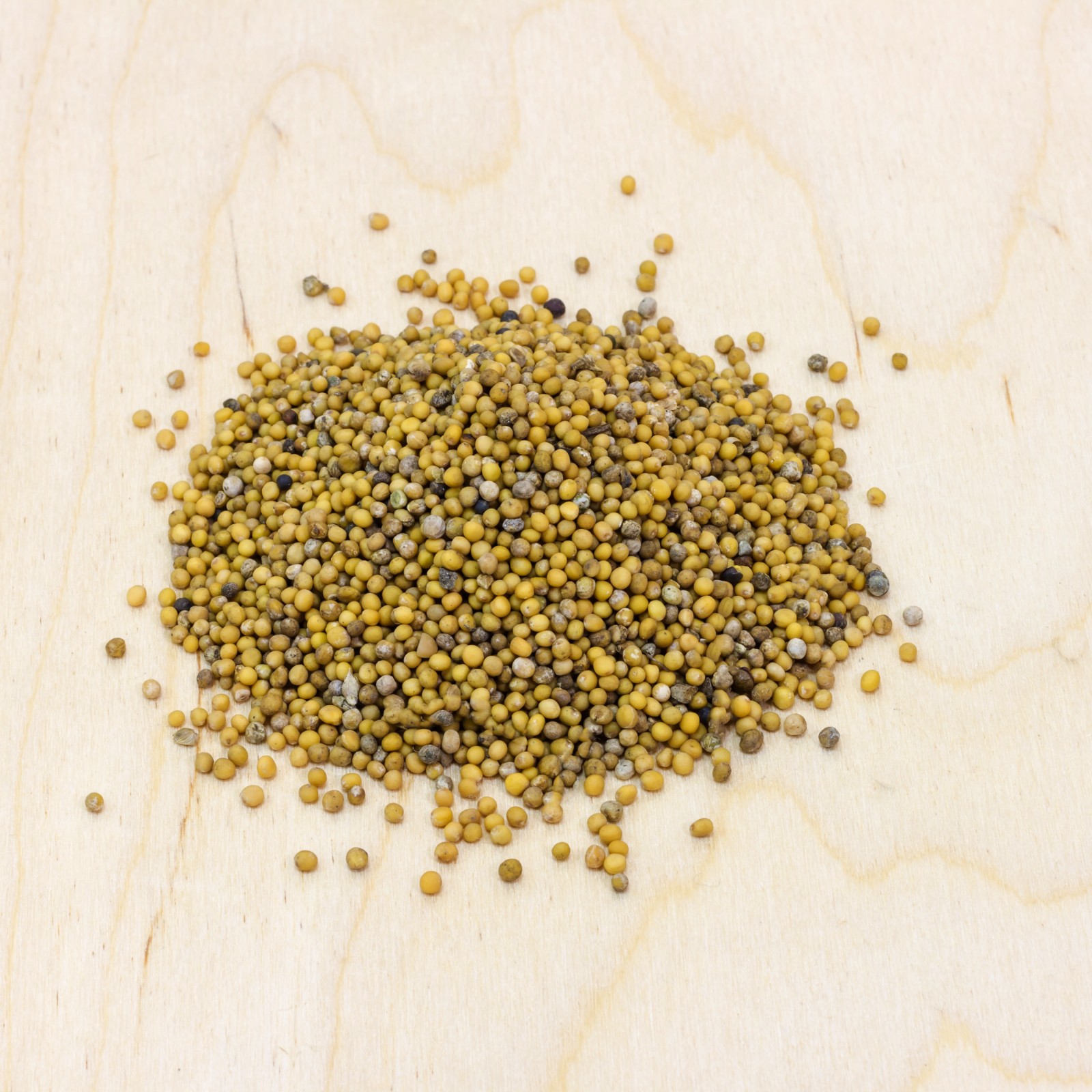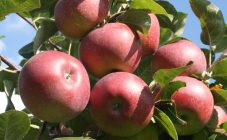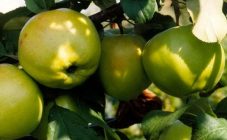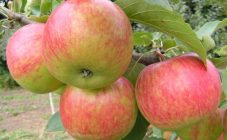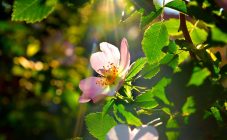Content:
Apple trees are one of the most beloved fruit trees in any garden, because their fruits are not only tasty and healthy in themselves, but also give a lot of room for culinary imagination. The variety of varieties allows you to choose the right tree for any region and taste preferences. One of the most popular is the Iset Belaya apple tree, bred by L.A. Kotov. Recommended for growing in conditions of short summers and frosty winters, for example, in the Ural region.
There are several "Isetsk" apple varieties, which, with a similar name, have different characteristics: apple trees Isetskoe later and Rassvet Isetsky.
Specifications
Apple-tree Iset Belaya is a late summer variety, which is distinguished by the large size of literally everything. Tall tree with good vigor, with a wide, pyramidal, almost round crown of natural structure, large leaves and fruits. One apple from this tree can reach 260 g of weight, on average delighting the gardener with 130-180 g for each.
At the same time, the apple tree is distinguished by excellent taste and consumer qualities of the fruit. Their flesh is white, with small grains, dense, with a pleasant sweet and sour taste. The peel of the apples is white-yellow, with light tan stripes. The ripening period falls at the end of August and the beginning of September, but if the apples are not picked on time, they do not rot, but become poured, becoming transparent. The harvested crop can be stored for up to 1.5-3 months.
The variety is practically resistant to scab, from which apple trees of other varieties suffer so much, it is distinguished by excellent winter hardiness and high productivity. Begins to bear fruit at the 5th year of life.
Isetskoe later
Apple-tree Isetskoe later - this is another brainchild of L.A. Kotov, created on the basis of hybridization of the Ural apple-trees of the Schedraia and Yantar varieties on the basis of the Sverdlovsk experimental gardening station in 1962-72. Recommended for growing in the Volgo-Vyatka and Ural regions. The variety is winter and is valuable for this, since winter apples have a longer shelf life. In this variety, fruits, ripening in mid-September, can persist until February-March.
The tree is distinguished by high winter hardiness, as well as medium drought, - and heat resistance, it also copes with scab on an average. A mature tree can reach 4-5 m in height. Isetskoe later differs in average early maturity, since it begins to bear fruit in the 5th year of life. The yield is above average, the character is not sharply periodic.
An apple tree of medium vigor, with a round, medium-dense crown. The size of the fruits is medium and below average, the weight can reach 120 g maximum, on average - about 75 g. The shape of the apples is round-truncated-conical, slightly ribbed. The skin is light yellowish green, sometimes with small stripes of pinkish blush. Fruits with white, medium density, pulp, coarse-grained and slightly juicy, with a pleasant sweet-sour taste and moderate aroma.
This apple variety is less resistant to scab and therefore requires additional processing in damp years. You should also monitor the condition of the crown, avoiding thickening, which limits the access of fresh air to the fruits and leads to the development of the disease.
Isetsky Dawn
The apple tree Dawn of Isetsky was also bred by L.A.Kotov at the Sverdlovsk breeding station. Ripening period - summer, the harvest can be harvested at the end of August. Fruits are stored for only about 3 weeks.
The tree is medium-sized, winter hardiness is quite high, and there is also an immunity to scab. Differs in high productivity, large fruits and their high taste. The average weight of apples ranges from 100-120 g, and the maximum can reach 140 g. The skin is yellow, with pink stripes of blush. The creamy pulp has a coarse-grained structure and a pleasant sweet and sour taste. The apples are very juicy.
Agrotechnics
Although apple trees are rather unpretentious plants, adherence to agricultural technology and proper care will not only save the tree from diseases, but also significantly increase the size and quality of the crop.
The variety Iset Belaya is a large apple tree according to the description. Therefore, it is important to take care of the right place for planting in advance. It is better to choose a sunny place, protected from strong winds, where there is no stagnant water and constant waterlogging of the soil. The apple tree soil prefers loamy or sandy loam soil. The same applies to other "Iset" varieties.
Landing
Planting seedlings is carried out according to the standard scheme:
- Preparation of the landing pit. The size should correspond to the size of the root system of the seedling and be at least 45 * 45 cm in depth and width;
- In the center of the pit, a hill is made of soil, fertilizers are applied (humus, ash, rotted manure, peat);
- If necessary, you can install a pole in the center of the pit, which will provide the seedling with support for the first time;
- The seedling is installed vertically on a hill in the center of the pit, the roots are straightened and covered with soil. The root collar must remain above the soil level.
- The ground around the trunk should be crushed and watered well.
The planting hole must be prepared in advance so that the soil has time to settle and erode. If planted in the fall, you need to prepare the hole at least 1-2 months before planting, which is optimal at the end of October. In the case when the seedling is planted in the spring, it is advisable to prepare the pit in the fall.
The distance between trees should be at least 3.5-4 m, and the row spacing should be up to 5 m.
You can start trimming the crown immediately after planting. It is shortened by about a third of the total size of the tree, this stimulates the growth of new shoots, so that the seedling grows quickly.
Care
You can describe the features of care in a few words: watering, pruning, weeding. The apple tree does not like waterlogging and stagnation of water at the roots, therefore, it should be watered, although regularly, but in moderation. It is also important to regularly loosen the tree trunk circle, removing weeds and roots of perennial plants. This will improve oxygen access to the roots.
To maintain optimal soil moisture, protect the young tree from weeds and at the same time provide it with additional nutrition, the tree trunk can be mulched. To do this, the soil is loosened, organic fertilizers are applied and covered with straw, peat or sawdust. Due to this, in the first year of life, the apple tree does not need additional feeding - there are still enough nutrients in the soil.
In the future, the tree is regularly fertilized - up to 3-4 times a year. To do this, a groove is dug along the perimeter of the trunk circle, where the fertilizers necessary for this period are applied:
- After spring pruning, organic fertilizers are used - 3 buckets of humus, diluted bird droppings or cow dung, infused for 2 weeks. You can also use urea (up to 0.5 kg per tree);
- When the apple tree blooms, liquid fertilizers are used: potassium sulfate (0.4 kg) and superphosphate (0.5 kg), mixed with slurry (5 l). The mixture is insisted for a week, the consumption per tree is 40 liters;
- When the apple tree fades, it is fed with a mixture of sodium humate and nitrophoska (10 g and 0.5 kg, respectively), which are diluted in 100 liters of water. One tree takes up to 3 buckets of mixture;
- After harvesting, the apple tree is fed with dry or liquid fertilizers, focusing on weather conditions (for example, a mixture of superphosphate and potassium sulfate, 0.3 kg each).
The older the apple tree, the more often it is fed, and the higher the concentration of fertilizers.
Pruning is an essential part of your annual apple tree maintenance. The most favorable time for her is early spring, before the buds bloom. The first time the apple trees are pruned in the year of planting, the branches are cut by a third. For the formation of the crown, in the future, the branches are cut to a quarter of their length.
Pruning fruiting apple trees requires special attention. If this is not done correctly, apples will ripen only on the upper branches, while the lower ones will be sterile. To avoid this situation, it is necessary to regularly carry out sanitary and anti-aging pruning. This complex includes several procedures:
- Thinning - removal of diseased, dry, broken off branches, as well as those that grow "inside" the crown. They are cut "on a ring", leaving a small stump - up to 1 cm;
- Shortening - stimulates the growth of side shoots, rejuvenates the tree and increases yield.
After all the manipulations, the cut sites are treated with garden varnish. In addition, it is recommended to regulate the number of fruits - one apple is removed in each bunch, as well as all deformed and damaged ones.
Advantages and disadvantages of the variety
The characteristic of the variety will be incomplete without highlighting its main advantages and disadvantages. All three described "Iset" varieties are characterized by high winter hardiness and resistance to adverse weather conditions. Also their distinctive feature is the excellent taste of the fruit, which is suitable for all types of culinary use.
The fruits of the Isetskoe apple tree later, although they ripen late, are stored for a very long time. However, among the disadvantages of this variety should be noted the oiliness of the skin, which is acquired during storage, and the average resistance to scab. In this, it is inferior to other popular winter varieties: Voskhod apple and Severnaya Zarya. Iset White and Isetsky Dawn, on the contrary, will delight the gardener with immunity to this disease and the summer harvest.
Choosing one of these varieties for your garden, you can be sure of getting a beautiful, rich harvest without excessive care. Having given a little time to apple trees, you can enjoy the excellent taste of their fruits for many years.
